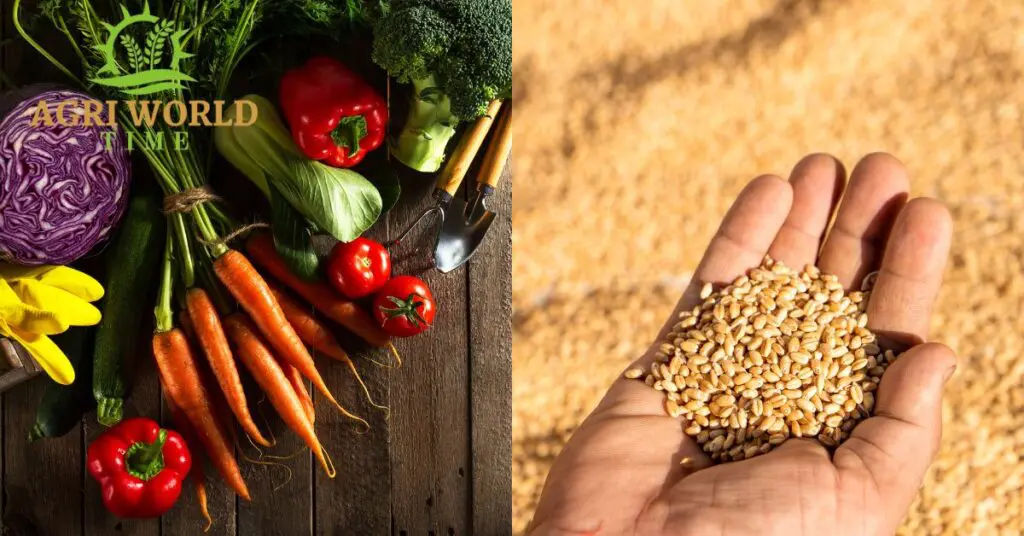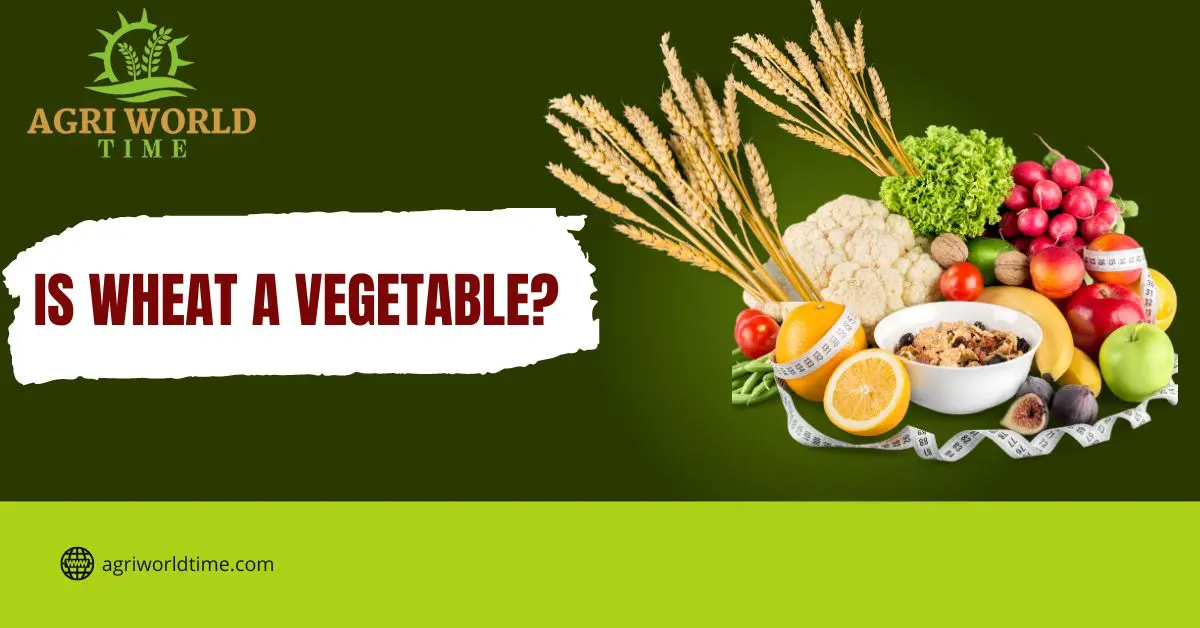When classifying food, there are clear distinctions between fruits, vegetables, grains, and other categories. However, certain foods blur these lines and leave us questioning their true nature. One such food item that often sparks confusion is wheat. Is wheat a vegetable? This seemingly simple question opens up a fascinating exploration of the botanical and culinary world.
Wheat is one of the world’s oldest cultivated crops. It has been a vital part of human civilization for thousands of years. It has provided sustenance, nourishment, and even cultural significance to countless communities around the globe. But does it fall under the umbrella of vegetables? We must delve into wheat and vegetables’ characteristics, definitions, and classifications to answer this question.
In this blog, we embark on a journey to unravel the mystery surrounding the categorization of wheat. We’ll examine the scientific aspects of wheat. It includes its plant anatomy, growth patterns, and cultivation methods. Understanding the essence of wheat as a plant will help us contextualize its place within the broader botanical framework. So let’s start our journey to determine whether wheat is a vegetable, fruit, or cereal.
The Wheat Plant: Anatomy, Growth, and Cultivation
To truly comprehend the nature of wheat and its classification, it is essential to delve into the intricacies of the wheat plant itself. Understanding its anatomy, growth patterns, and cultivation methods will provide valuable insights into its characteristics and how it is cultivated.
Wheat is scientifically known as Triticum It belongs to the grass family Poaceae. An annual plant undergoes a life cycle from seed to mature plant. The wheat plant typically consists of roots, stems, leaves, and reproductive structures known as spikes. The root system enables the plant to absorb water and nutrients from the soil. Similarly, the stems provide structural support and transport vital substances throughout the plant.
As the wheat plant matures, it develops spikes that bear the grain or seed heads. Each spikelet contains several flowers, which develop into wheat kernels upon pollination. These kernels are the edible part of the wheat plant and are harvested for various culinary uses.
Wheat growth is influenced by various factors, including climate, soil conditions, and agronomic practices. Wheat is typically grown in temperate regions, with specific varieties adapted to different climates. It requires adequate sunlight, water, and nutrients for optimal growth. Farmers employ various cultivation techniques, such as planting, fertilizing, and crop rotation, to ensure healthy and productive wheat crops.
Moving forward, we’ll explore the historical significance of wheat as a staple food and its nutritional value. Understanding these aspects will provide a broader context for its role in human consumption and its significance as a dietary component.
Characteristics of Vegetables: Key Features and Classification
Before delving into the categorization of wheat, it is crucial to understand the characteristics that define vegetables and how they are classified. Vegetables are an essential component of a balanced diet. They provide a wide array of nutrients, flavors, and culinary possibilities.
Vegetables are typically defined as edible plant parts consumed in various forms, including fresh, cooked, or processed. They are known for their high content of vitamins, minerals, fiber, and phytochemicals, contributing to overall health and well-being. While vegetables encompass a diverse range of plant species, they share key features that set them apart from other food groups.
Common characteristics of vegetables include:
Following are the common characteristics of vegetables:
Edible Parts:
Vegetables consist of different edible parts, such as leaves (lettuce, spinach), stems (celery, asparagus), roots (carrots, beets), bulbs (onions, garlic), flowers (broccoli, cauliflower), and fruits (tomatoes, cucumbers). These edible parts contain various nutrients and flavors.
Low in Fat and Calories:
Vegetables are generally low in fat and calories. It makes them suitable for maintaining a healthy weight and promoting overall wellness.
Nutrient Density:
Vegetables are rich in essential vitamins, minerals, and dietary fiber. They provide many nutrients necessary for optimal body functioning and disease prevention.
Variety of Colors, Textures, and Flavors:
Vegetables offer a diverse sensory experience with a spectrum of colors, textures, and flavors. From vibrant greens to bright oranges, crisp to tender, and sweet to savory, vegetables bring diversity and excitement to our meals.
Grains versus Vegetables: Differentiating Between the Two Categories
As we navigate wheat classification, it is essential to distinguish between grains and vegetables. Grains and vegetables are distinct food categories, each with its defining characteristics and roles in our diet.
Grains, such as wheat, rice, corn, and barley, are seeds that belong to the grass family (Poaceae). They are the reproductive part of the plant and are typically rich in carbohydrates, providing a significant energy source. Grains produce staple foods like bread, pasta, cereals, and flour-based products. They undergo processing and milling to transform them into various food products.
On the other hand, vegetables encompass a wide range of plant species, as discussed in the previous section. Unlike grains, vegetables are not plants’ reproductive parts but various edible parts such as leaves, stems, roots, bulbs, flowers, or fruits. They offer an array of nutrients, flavors, and culinary versatility.

Botanical classification to determine the category of wheat
Wheat is classified as a cereal grain and belongs to the grass family (Poaceae). It is not categorized as a vegetable from a botanical perspective. Wheat kernels are also referred to as wheat berries. They are the edible part of the plant and are a vital source of nutrition and culinary versatility. They are milled to produce flour or used as whole grains in various recipes.
Understanding the botanical classification of wheat as a grain helps us comprehend its unique characteristics and significance in our diets. While wheat is not considered a vegetable, it is essential to note that it can be integral to a balanced and diverse diet, providing essential nutrients and contributing to culinary traditions worldwide.
Wheat’s Nutritional Profile: Comparing it with Traditional Vegetables
Understanding the nutritional composition of wheat is essential to evaluate its role in our diet and compare it with traditional vegetables. While wheat is not classified as a vegetable, it offers unique nutrients that contribute to overall health and well-being.
Wheat is a good source of complex carbohydrates, providing energy to fuel our bodies. It is also rich in dietary fiber, which promotes digestive health and helps maintain healthy cholesterol levels. Additionally, wheat contains essential minerals such as iron, magnesium, and zinc, vital for various physiological functions.
When comparing the nutritional profile of wheat with traditional vegetables, it’s essential to consider the diversity of vegetables available. Different vegetables offer different nutrients, and their nutritional composition can vary widely. However, in terms of specific nutrients, wheat does have certain advantages.
For instance, compared to leafy greens like spinach or kale, wheat tends to be higher in protein content. This makes it a valuable source of plant-based protein for individuals following vegetarian or vegan diets. Additionally, wheat contains significant B vitamins vital in energy production, metabolism, and overall cellular functioning.
While vegetables are known for their rich array of vitamins, minerals, and phytonutrients, it is worth noting that wheat also contains essential vitamins like niacin, thiamine, and vitamin E. These vitamins contribute to various aspects of our health, including proper nerve function, energy production, and antioxidant protection.
It is important to emphasize that while wheat offers its nutritional benefits, a well-rounded diet should incorporate a variety of vegetables to ensure a broad spectrum of nutrients. Vegetables provide unique phytonutrients, antioxidants, and specific vitamins and minerals contribute to overall health and disease prevention.
Wheat in Culinary Traditions: Bread, Pasta, and Beyond
With its versatile nature, Wheat holds a significant place in culinary traditions worldwide. Wheat-based products have become staple foods in various cuisines, from bread to pasta and an array of delightful creations.
One of the most iconic uses of wheat is in producing bread. Wheat flour is the foundation for countless bread recipes, combining texture, flavor, and structure. Whether it’s a crusty baguette, a fluffy loaf of sandwich bread, or traditional flatbreads, wheat has played a central role in bread-making for centuries.
Pasta, another culinary delight, owes its existence to wheat. Wheat flour is essential for creating the beloved pasta shapes and textures enjoyed worldwide, from spaghetti to macaroni, fusilli to lasagna. Wheat-based pasta’s versatility allows for many recipes, from simple and comforting dishes to elaborate gourmet creations.
Beyond bread and pasta, wheat flour is used in various culinary applications. Cakes, pastries, cookies, and other baked goods rely on wheat flour for their structure and texture. Wheat is also a primary component in producing cereals, crackers, and various snack foods.
The significance of wheat as a staple food cannot be overstated. In many cultures, wheat-based products form the foundation of daily meals, providing sustenance and nourishment. The accessibility, affordability, and versatility of wheat have made it an integral part of countless cuisines worldwide.
In addition to its culinary usage, wheat holds a cultural and symbolic value in many societies. It is often associated with tradition, heritage, and celebrations. From religious rituals to festive occasions, wheat-based foods play a prominent role in cultural practices, reflecting the deep-rooted connections between food, identity, and community.
Conclusion:
After an in-depth exploration of wheat’s characteristics, botanical classification, nutritional profile, and culinary significance, we can confidently state that wheat is not classified as a vegetable. From its status as a cereal grain belonging to the grass family to its prominent role in culinary traditions as a staple food, wheat occupies a distinct place in the food world. While it offers its unique set of nutrients and culinary versatility, it does not meet the criteria to be classified as a vegetable. Understanding the nuances of food classification allows us to appreciate the diversity of plant-based foods and their contributions to our diets and culinary experiences. So while wheat may not be a vegetable, it remains an essential and cherished component of our meals, making its mark on the global culinary landscape.
FAQs
Is wheat considered a vegetable?
No, wheat is not considered a vegetable. It is classified as a cereal grain and belongs to the grass family (Poaceae). Wheat is distinct from vegetables, typically classified as various edible parts of plants such as leaves, stems, roots, bulbs, flowers, or fruits.
What is the nutritional value of wheat?
Wheat is a good source of complex carbohydrates, dietary fiber, and essential minerals such as iron, magnesium, and zinc. It also contains B vitamins and provides plant-based protein. However, the specific nutritional value of wheat may vary depending on factors such as the variety of wheat and the processing methods used.
What are some common culinary uses of wheat?
Wheat is widely used in culinary traditions around the world. It is a primary ingredient in bread, pasta, cakes, pastries, cereals, and baked goods. Wheat-based products offer texture, structure, and flavor to various dishes. It makes them integral to many cuisines.
Can wheat be a part of a healthy diet?
Wheat can be part of a healthy diet when consumed in moderation and as part of a balanced meal plan. It provides essential nutrients, dietary fiber, and energy. However, it’s important to consider individual dietary needs and any potential allergies or intolerances to wheat or gluten.
Can wheat be substituted with other grains or vegetables?
Yes, various grain alternatives are available for those who cannot consume wheat or prefer alternatives. Grains like rice, quinoa, oats, and corn can be substituted in recipes. Additionally, cauliflower or zucchini can be used as alternatives in certain dishes, such as cauliflower rice or zucchini noodles.
Are there any potential health concerns related to wheat consumption?
For most individuals, wheat consumption is not a concern. However, some people may have specific dietary needs or sensitivities, such as celiac disease or non-celiac gluten sensitivity, which require them to avoid wheat or gluten-containing products. It’s essential to consult with a healthcare professional or registered dietitian for personalized dietary advice.

